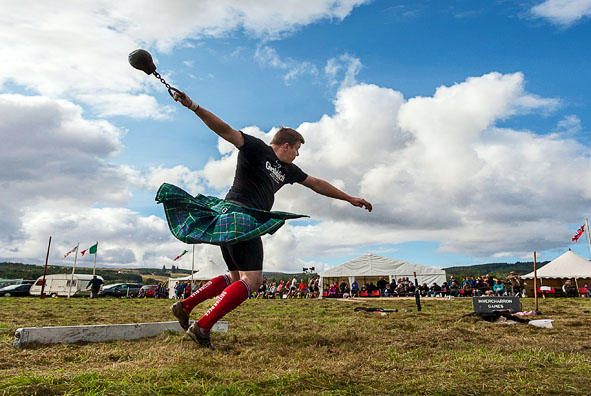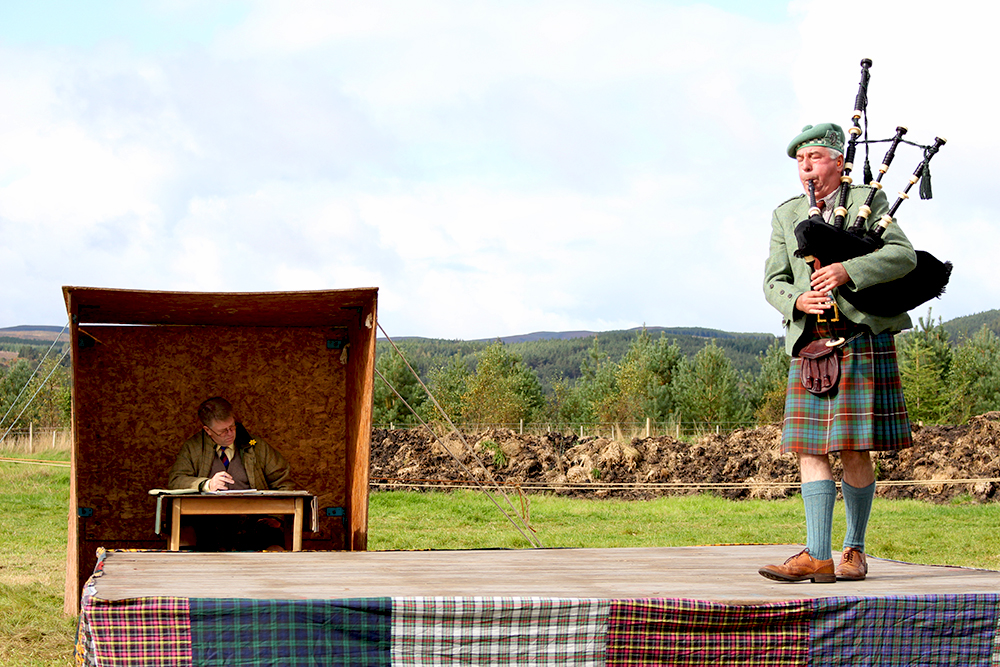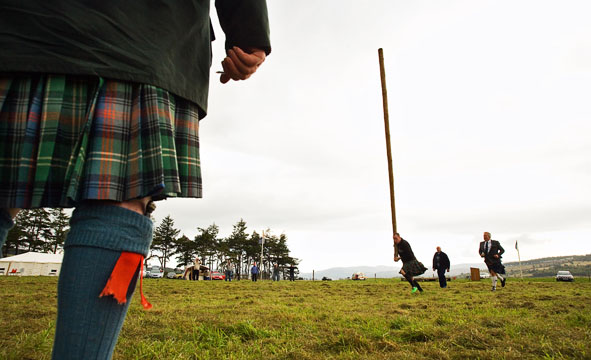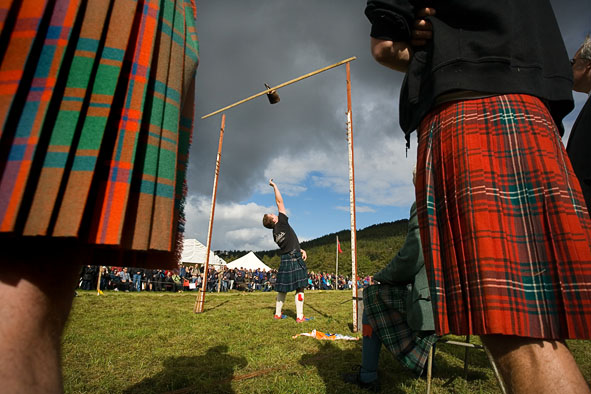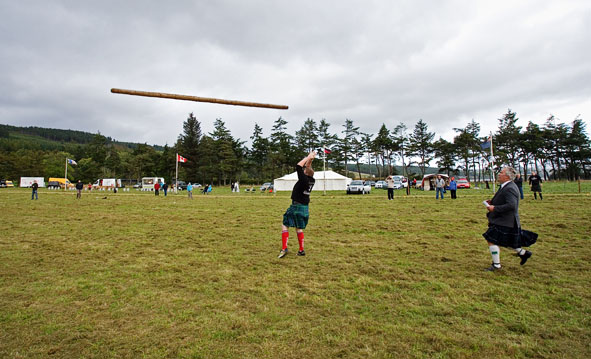Every summer a series of Highland Games takes place to celebrate strength, athleticism and culture in a way that is uniquely Scottish. A visit to these games is the quintessential Scottish cultural experience.
Drive 10 miles in any direction from where I was stood in the Scottish Highlands and you would be treated to some of the most stunning vistas in all of Scotland. So why was I in the middle of a field instead?
To better answer that, we must travel back briefly to the 11th Century to join Malcolm III, King of Scots. Although no written records survive, it is widely believed in Scotland that the first ever Highland Games can be attributed to him. He ordered a number of men to take part in a fell-running competition in order to find a new and trustworthy royal messenger.
From that point on, although there was never any regularly organized version of the Games until the Victorian era, feats of strength and endurance in competition became common. These took on greater significance during the middle of the 20th Century when Scottish culture and traditions became threatened with erosion by a rapidly globalizing world.
The Arena
I had come to check out the Invercharron Games, which are the final competition of the Highland Games season.
On arrival it felt like a village fete that had gotten out of hand. Over at one end of the field, a child of no more than 7 was at the controls of a big, real yellow JCB. At the other end a boy – donning full Scottish regalia: kilt, sporran, and most importantly, a set of bagpipes: the instrument that looks like a Chernobyl octopus – was playing a sombre pibroch.
Under a gazebo a man was furiously hacking at a block of wood with a chainsaw. I could have sworn it looked as though he was cutting out the shape of a dog’s head but the ferocity of his movements, punctuated by clouds of sawdust, made it difficult to verify.
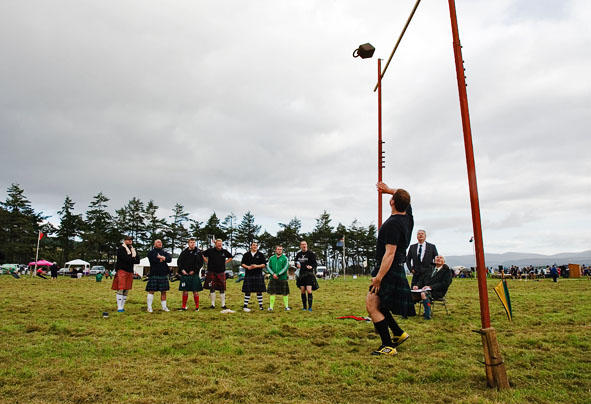
Getting ready to dodge the weight, and possibly bar as they head back to earth. (Photo: Paul Tomkins)
The layout resembled a modern athletics track: an oval grass track circumventing a field where people were throwing heavy things abnormally long distances. In many ways the Highland Games seems like a cross between an athletics and a world’s strongest man competition.
One of the first things I noticed was the prevalence of Canadian flags alongside Scotland’s blue and white Saltire. At the height of their tyranny, the British Empire attempted to “cleanse” the Highlands of Scottish culture, banning the gathering of Scots in crowds, and even banning bagpipes. Some may call that a smart move, but I have always found the bagpipes to have a haunting, mysterious quality that represents the wilderness rather aptly.
Many Scots were forced to leave their land to resettle in North America. A glance at the list of Highland Games currently held there shows how far and wide these early colonists spread Scottish culture. In Alberta and Ontario in Canada there are a large number of Highland Games events held annually, as well as many held across the United States.
Physical Prowess
There were competitions for bagpiping, separated into various categories such as the Strathspey or jig, which accompanied the Highland dancing competition. But it was the solemnity of the pibroch, often used as a lament, which was the most riveting.
A small stage had been erected. As I wandered over, an elderly gentleman in his finest pale tweed slowly walked the boards in a circle as he piped the mournful tune. At times the stressed notes of various bagpipers drifted across the field and met in the middle like a discordant jam session.
Loud grunting buffeted the bagpipe performance. The tug of war had begun. This was not some whimsical pulling of a rope. Each team had their own official kit and something I had never attributed to a tug of war before: tactics. Both teams leaned back to near horizontal angles taking every ounce of strain like exposed trees on a windy ridge. They each dug their heels into the turf waiting for a clinical moment to heave the rope and topple their opposing force.
Before long some of the feats of strength and power were becoming increasingly impressive. The professional Highland Games competitors had taken to the field. Sweaty, butch men doing what sweaty, butch men do best: throw incredibly heavy things that most people could not even lift.
The ‘weight over the bar’ event resembled a death wish convention; something I did not think existed until I came to Invercharron. The premise was to take a 4 stone (25kg) weight with a handle and throw it, one-handed, over your shoulder in an attempt to both clear a high-jump bar above your head and get out of the way before it lands. The latter part was not being judged of course, it was just to ensure you lived to throw other heavy things indiscriminately up to the sky another day.
Each competitor had three opportunities to clear the bar. Those who failed three times were out; the rest proceeded to the next round as the bar was raised even higher.
Scotland the Brave
After the weight over the bar event I got the chance to talk with one of the competitors named Rob. His knee was heavily bandaged.
“I pulled one of the ligaments last week at another event”, he told me.
Yet he was still out there competing as ever as though it was just a minor flesh wound.
The final event was the toughest of the competition: the caber toss. The objective is to lift a 19 feet 6 inch (5.94m) long log weighing 175lbs (79kg) vertically by holding the bottom, run with it a short distance, then flip it so that the top end hits the ground and the bottom lands perfectly at the 12 o clock position facing away from you. Not only is it heavy, it is incredibly ungainly; even worse if your knee is in bad shape.
Bonar Bridge is the closest town to the Invercharron Games. It is a small, rather nondescript town, and home of Kenny Campbell, a one-time Highland Games contestant credited with the revival of the Invercharron Games.
Most people probably know of one of his exploits even if the name is not familiar. In 2006 a team from the John Muir trust, which protects and manages the highlands of Scotland, were dismantling some of the cairns atop Ben Nevis.
Under one they found the remains of a piano. When the story went national, Kenny came forward to admit he had carried up a 226lb (102.5kg) organ to the top of Ben Nevis to raise money for a cancer charity. When he reached the top, he played ‘Scotland the Brave’ on it then, too tired to carry it back down, left it there. He returned some time later to find that it had gone missing. For 35 years at least.
The final act of the day was to present the prizes. Awards are given for all events in competition. For many it will be their last change to compete for the year. Invercharron is something of a winding-down event, saying goodbye to the Games before they start up again in late June the next year.
As the games came to an end, I half expected everybody to file off down to the pub, but many of the competitors had come a long way and had to drive back home. Rob was one of them, going home to nurse the ligament damage perhaps. Or just carry on with his life as though his knee was in perfect working order.
Down at the other end of the field, the JCB was empty. Close-by stood a perfectly formed Alsatian, carved from a vast block of wood using nothing but a chainsaw.
Further information:
The official Highland Games association publicise a list of their events.
The Invercharron Games will be held on Saturday 19th September this year.
